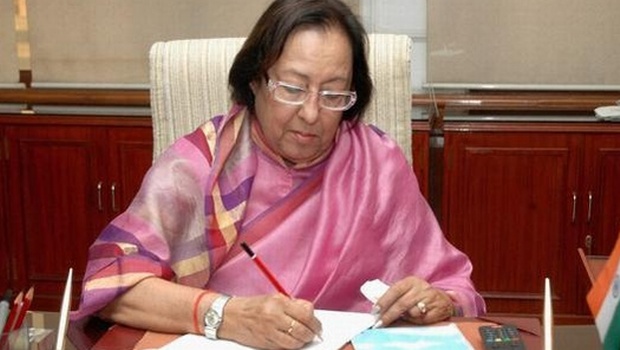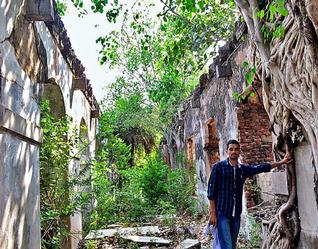Chitradurga, KARNATAKA :

by Dr. C.G. Narasimhan, Senior Consultant Surgeon
The Eid Milan get-together held recently in Mysuru and the talk given by the Imam-e-Haram of Makkah, Saleh bin Mohammad bi Ibrahim Aal Talib, during his visit to Mysuru some time back has prompted me to write about my association with Muslims during my younger days I spent in Chitradurga.
In the year 1890, Sir K. Seshadri Iyer, the then Dewan of Mysore, started Insurance Scheme under the name Mysore Government Insurance Department (MGID). It is now called KGID and has its building in Bengaluru. It took some time for the people of Mysore State to accept the new concept of insuring their lives then. Agents were appointed all over the State and necessary propaganda was carried out. My grandfather Singa Iyengar was one of the pioneers in spreading the message of taking life insurance policies.
After his retirement as a bench clerk in the Law Courts some time in 1915, he took up the agency of MGID in Chitaldrug (as it was called then). In an effort to popularise the new scheme he got his black umbrella embroidered with slogans ‘Insure Your Life today’ to impress people and go around whirling it. I am told that people started calling him ‘Gileet Singa Iyengar’ for his knack of convincing them to take policies. It was at this time he came in contact with the general public of the town, particularly the Muslims.
Several of his friends of this community used to visit his house on Dharmashala road in Chitradurga. One such person was Rahman Sab whom I as a boy of 6 or 7 years remember with the traditional beard and pajamas visiting our house for a cup of coffee every morning even after my grandfather’s death.
My father Garudachar stepped into his father’s shoes in every sense of the term. He also made a number of Muslim friends, went a step further in talking to them in their dialect Urdu. I remember him calling the seniors as ‘Hazarat’ and others as Chacha. There was one Jaleel sab who was working as an attender in the Central Library of the town. He was calling my father as ‘Bhateeja.’ One Abdul Gani, a very popular Drill and Scout teacher in the Boys High School, was another good friend of my father.
Muslims in Chitradurga those days in 1940s and 50s were mainly concentrated in three localities, Assar Mohalla, Khazi Mohalla and Baaharpet (Horapete in Kannada). The ever active senior Congress leader Jaffer Sharif from the Assar Mohalla area started his political career by winning his election to the Town Municipal Council of Chitradurga as a 24-year-old youth in the early 50s against a senior Gandhian H.C. Narayana Iyengar. Another Muslim luminary C.A.K. Junaidi, who was an Advocate and a popular person became the President of the Municipal Council.
There was one boys Urdu Middle School in the town of Chitradurga which had a total population of 24,000 or so then. The Head Master was Abdul Rahman, a tall gentleman. All his children were all Ur Rahmans like Afzal, Mohamed and Fazl, the first and second were good Basket Ball players. All the Muslim students joining High School after LS exam were necessarily admitted to the English Medium Class along with some of us. So most of my classmates were Muslim boys. To name a few they are Abdul Samad, who retired as the Superintending Engineer of KEB, Wazeer Ahmed, who became a Geologist and joined GSI, Majid Hussain, who later became Special Assistant to Divisional Commissioner, Mysore, Rahmath Ulla, Abdul Khuddus, Md Umar, Ata ulla, Md Shafi and Mubeen. Some of them used to wear the classical red tubular cap with black thread tassels, known commonly as Turkey cap or Fez, Tarboosh.
After we entered the Intermediate College where we had co-education I do remember the names of some contemporary girls, Shakirunnisa, Sakinabi, Zainabi, Mehrunnisa and Nazbunnisa who was the sister of Junaidi mentioned above. It may be of interest to note that all of them were coming in sarees like the other girls.
My association with the Muslim boys was so much that I used to talk to them only in Urdu and my friend Samad taught me how to read and write Urdu which I have not forgotten even today. I can easily write my name in Urdu. This has gone a long way in winning the confidence of my Muslim patients in Mysuru.
There were two Mosques for a population of about one thousand Muslims in Chitradurga. One in Assar Mohalla and the other in Horapete area. The former was called Jamia Masjid known for its beautiful architecture supposed to have been built by Tipu Sultan. The backdrop of the hill added to its beauty. There were Muslim dwellings only on the left side of the mosque; other sides were occupied by Hindus. Right in front of the Mosque there was Uttaradi Matadakeri occupied by Brahmins. One Bodarayachar used to arrange Harikatha discourses during Rama Navami annually across the road in front of the Mosque which indicates the absolute harmony that existed between the communities. Allowing general public to draw water from a well in the compound of the Mosque during water scarcity was another act of peaceful co-existence.
As a youngster I used to go into the premises of the Mosque and emerge out through the hind wicket gate which opened to Chickpete. My house being within a stone’s throw from the Mosque, we used to hear the morning prayer Azaan which was rendered without mike. It was like a soothing alarm to wake up particularly during my college days. The mellifluence of such morning prayers nowadays are marred by the high volume speakers and the din in the atmosphere. ‘Huli Vesha,’ the dancing ritual during Moharrum was the other attraction to us those days. A person getting painted with yellow and black stripes and jumping on the road in the garb of a tiger was a regular event in the town. One Gafoor Sab was a master in this art which is vanishing these days. Our house was a destination for him to entertain for a while and drink a glass full of hot milk and go.
Finally, I cannot forget our maamool Jutka saab Ameer shouting ‘Bajoo, Bajoo’ to clear the traffic while coming from Railway Station which was on the outskirts on Davangere road.
[e-mail: cgnshanthi@gmail.com]
Note: I want to comment (after all, ‘comment is free’ is SOM’s motto) on three points made by the writer Dr. C.G. Narasimhan (CGN). First about the Intermediate college with co-education where Muslim girls used to come “in sarees like the other girls.” The same is my experience when I studied in Intermediate college and First Grade College with co-education at Madikeri, Kodagu. Muslim girls used to come in sarees. Sadly, because of religious extremism seen these days of vote-bank politics in democracies we have a different, divisive dress-choice in our schools and colleges where some students show off their religions by dressing differently and thereby distancing themselves from the mainstream. In America, the term ‘neutral dress’ means the clothes students wear normally without any distinct religious identification.
Second point is about Dr. CGN learning Urdu and how it helped him in his profession in later days. Like smile, speech as a common language too brings people together and makes them intimate, builds confidence. Let us remember that Mohammed Ali Jinnah’s Muslim Pakistan was split asunder because the West Pakistan insisted the Bengali-speaking East Pakistan to speak Urdu and accept it as official language. A case where a common religion could not hold the country together and got itself divided on the basis of different languages — Bangladesh was born. If India was divided on the basis of religion, Pakistan was divided on the basis of language. These priests and politicians thus fragmented a loving, innocent humanity.
Third point is about Azaan, call to prayer. Those days there was no technology to use high volume speakers in my village town in Kodagu. But these days loud speakers blare, in some cases wantonly and for too long than what is considered normal. —KBG
source: http://www.starofmysore.com / Star of Mysore / Home> General News / August 19th, 2016














